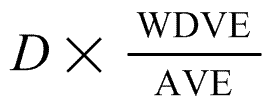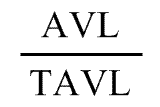Change of policy involving disaggregationU.K.
874Original asset not subject to fixed-rate writing downU.K.
(1)This section and section 875 apply if—
(a)the change of accounting policy results in an intangible fixed asset of the company that was treated as one asset (“the original asset”) in the earlier period being treated as two or more assets (“the resulting assets”) in the later period,
(b)there is a difference (“the accounting difference”) between—
(i)the accounting value of the original asset at the end of the earlier period, and
(ii)the sum of the accounting values of the resulting assets at the beginning of the later period,
(c)no election under section 730 (writing down at fixed rate: election for fixed-rate basis) has been or is subsequently made in respect of the original asset, and
(d)no such election is subsequently made in respect of any of the resulting assets.
(2)If the accounting difference is an increase, a corresponding credit must be brought into account for tax purposes in the later period.
(3)If the accounting difference is a decrease, a corresponding debit must be brought into account for tax purposes in the later period.
(4)The credit or debit is—
where—
D is the accounting difference,
WDVE is the tax written-down value of the original asset at the end of the earlier period, and
AVE is the accounting value of that asset at the end of that period.
(5)But if subsection (2) applies the credit must not exceed—
(a)the sum of the debits brought into account for tax purposes in respect of the original asset before the later period, less
(b)the sum of the credits so brought into account.
(6)This section is subject to section 878 (exclusion of credits or debits brought into account under other provisions).
875Effect of application of section 874 in later period and subsequentlyU.K.
(1)A credit or debit that is required to be brought into account under section 874 is treated as arising at the beginning of the later period (“the relevant time”).
(2)If section 874(2) applies, the tax written-down value of each resulting asset at the relevant time is—
where—
WDVE is the tax written-down value of the original asset at the end of the earlier period,
C is the credit,
AV is the accounting value of the resulting asset in question at the relevant time, and
TAV is the sum of the accounting values of all the resulting assets at the relevant time.
(3)If section 874(3) applies, the tax written-down value of each resulting asset at the relevant time is—
where—
WDVE, AV and TAV have the same meaning as in subsection (2), and
D is the debit.
(4)After the relevant time the cost recognised for tax purposes for each resulting asset is taken to be the sum of—
(a)the tax written-down value given by subsection (2) or, as the case may be, subsection (3), and
(b)the cost recognised for tax purposes of any subsequent expenditure on the asset that is capitalised for accounting purposes.
(5)After the relevant time the tax written-down value for each resulting asset is determined taking account only of subsequent credits and debits.
876Original asset subject to fixed-rate writing downU.K.
(1)This section applies if—
(a)the change of accounting policy results in an intangible fixed asset of the company that was treated as one asset (“the original asset”) in the earlier period being treated as two or more assets (“the resulting assets”) in the later period, and
(b)an election under section 730 (writing down at fixed rate: election for fixed-rate basis) has been or is subsequently made in respect of the original asset.
(2)That election has effect—
(a)in relation to the original asset, for periods up to and including the earlier period, and
(b)in relation to each of the resulting assets, for the later period and subsequent periods.
(3)The tax written-down value of each resulting asset at the beginning of the later period (“the relevant time”) is—
where—
WDVE is the tax written-down value of the original asset at the end of the earlier period,
AVL is the accounting value of the asset in question at the beginning of the later period, and
TAVL is the sum of the accounting values of all the resulting assets at the beginning of that period.
(4)After the relevant time the cost recognised for tax purposes for each resulting asset is the sum of—
(a)the tax written-down value given by subsection (3), and
(b)the cost recognised for tax purposes of any subsequent expenditure on the asset that is capitalised for accounting purposes.
(5)After the relevant time the tax written-down value for each resulting asset is determined taking account only of subsequent credits and debits.
877Election for fixed-rate writing down in relation to resulting assetU.K.
(1)This section applies if—
(a)the change of accounting policy results in an intangible fixed asset of the company that was treated as one asset (“the original undivided asset”) in the earlier period being treated as two or more assets (“the resulting assets”) in the later period, and
(b)no election under section 730 (writing down at fixed rate: election for fixed-rate basis) has been or is subsequently made in respect of the original undivided asset.
(2)An election under that section may be made in respect of any of the resulting assets.
(3)But such an election may be made only within the period during which such an election could have been made in relation to the original undivided asset.
(4)The effect of the election is that—
(a)the original undivided asset is treated as if it had at all material times consisted of as many assets (“notional original assets”) as there are resulting assets,
(b)each notional original asset is taken to be the same asset as one of the resulting assets (its “corresponding resulting asset”),
(c)the appropriate proportion of every amount falling to be taken into account in relation to the original undivided asset is attributed to each of the notional original assets, and
(d)this Part applies in relation to each of the notional original assets and its corresponding resulting asset accordingly.
(5)For the purposes of subsection (4)(c) the appropriate proportion of every amount falling to be taken into account in relation to the original undivided asset that is to be attributed to each notional original asset is found by reference to the notional original asset's corresponding resulting asset.
(6)The appropriate proportion in relation to each resulting asset is—
where—
AVL is the accounting value of that resulting asset at the beginning of the later period, and
TAVL is the sum of the accounting values of all the resulting assets at the beginning of that period.





